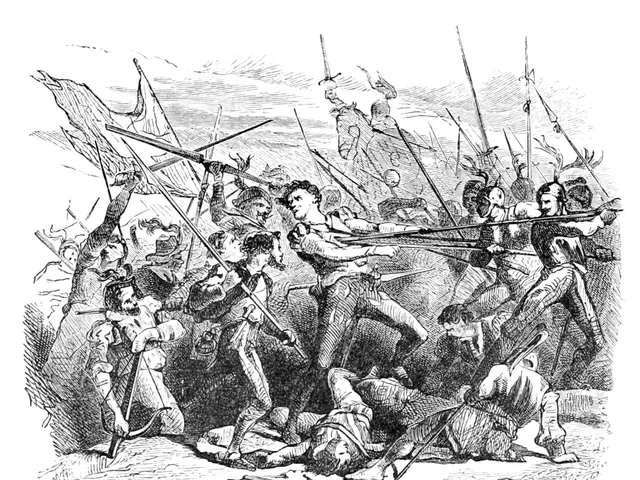Strategies for Organizing Creativity: Time Management Techniques for Managing Complex Creative Ventures
In the world of creativity and innovation, taking on large-scale projects can be both exciting and daunting. To help navigate these high-risk, high-reward endeavours, a guide titled "How to Plan for Creativity: Effective Time-Management Plans for Your Large-Scale Creative Projects" has been made available for free download. This guide, accompanied by a video tutorial, offers a wealth of strategies to manage large-scale creative projects more efficiently.
The guide, which has reportedly been enjoyed by over 318,130 designers, does not specify the three methods mentioned in the video tutorial. However, it is likely to offer additional strategies for managing high-risk, high-gain projects. The video, on the other hand, provides a comprehensive template for using these methods without specifying what they are.
Professor Alan Dix, an expert in the field, discusses these large-scale plans for creativity and innovation that span weeks, months, or even years. The three methods, when applied, aim to break down major high-risk creative work projects into smaller, tangible tasks with the highest potential for high gains and low risks.
One key approach is collaborative risk brainstorming, which involves diverse team members identifying potential risks and opportunities comprehensively. This method helps uncover hidden risks and mitigation options. Another important practice is creating and maintaining a risk register/log, where identified risks, their likelihood and impact, are documented and updated throughout the project.
Moreover, risks are prioritized according to their likelihood of occurrence and the severity of their consequences, allowing resources to be focused on mitigating the most critical threats. For prioritized risks, specific mitigation, contingency, or avoidance strategies are established to reduce risk exposure while preserving or enhancing gain potential.
The guide also emphasizes the use of project management methods, such as the Critical Path Method, to define critical and parallel project paths, dependencies, and resource constraints. This helps optimize timing and resource allocation, reducing the risk of delay or failure.
Additionally, the guide suggests staggering resource allocation and budgeting, allocating staff, budget, and technology in phases and tracking actual vs. planned usage to avoid bottlenecks and overspending that increase risk. It also recommends implementing agile and visual tools, such as Kanban, to monitor tasks in real time and improve predictability.
Lastly, the guide encourages conducting scenario planning and stress tests to simulate risk events and rehearse mitigation plans, enhancing preparedness and lowering actual risk when issues arise.
By embedding these practices, high-gain creative projects can systematically lower risk without sacrificing innovation or potential rewards, shifting activities from high-risk to controlled risk while maintaining high gain. Users also have the option to unsubscribe from the newsletter associated with the guide if they choose.
In summary, this guide and video tutorial provide valuable resources for managing large-scale creative projects effectively. By integrating comprehensive risk management, adaptive project planning, resource optimization, and continuous monitoring into the creative process, high-risk, high-reward efforts can be transformed into sustainable high-gain/low-risk methods.
In the realm of agile development, the guide emphasizes the use of project management methods such as the Critical Path Method, a key strategy for defining critical and parallel project paths, dependencies, and resource constraints. This helps in optimizing timing and resource allocation, reducing the risk of delay or failure.
UX and UI designs play an essential role in enhancing the user experience, and the guide recommends implementing agile and visual tools, like Kanban, to monitor tasks in real-time and improve predictability, thereby contributing to a controlled risk environment.
Collaborative risk brainstorming, which involves diverse team members identifying potential risks and opportunities comprehensively, is a valuable practice in education-and-self-development, as it helps uncover hidden risks and mitigation options, ensuring a smoother lifestyle outcome for large-scale projects.




